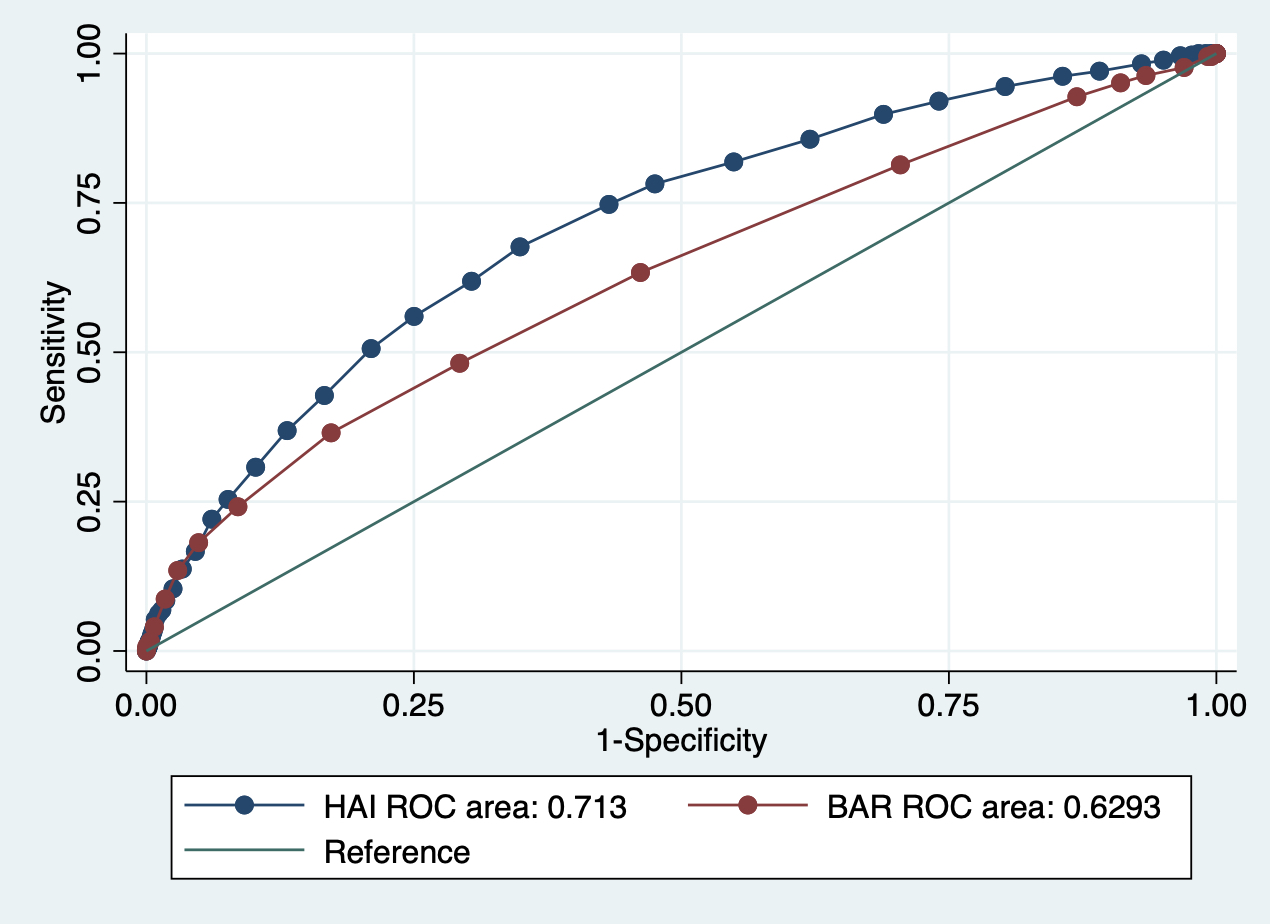The High Acuity Index: A Posttransplant Prediction Score for High-MELD Patients
1School of Medicine, Baylor College of Medicine, Houston, TX, 2Division of Abdominal Transplantation, Baylor College of Medicine, Houston, TX
Meeting: 2022 American Transplant Congress
Abstract number: 419
Keywords: High-risk, Liver transplantation, Risk factors, Survival
Topic: Clinical Science » Liver » 55 - Liver: Recipient Selection
Session Information
Session Name: Recipient Selection
Session Type: Rapid Fire Oral Abstract
Date: Tuesday, June 7, 2022
Session Time: 3:30pm-5:00pm
 Presentation Time: 3:40pm-3:50pm
Presentation Time: 3:40pm-3:50pm
Location: Hynes Room 312
*Purpose: Patients with a very high Model for End-Stage Liver Disease (MELD) score are at significant short-term risk for death without liver transplantation. While many scores aim to predict mortality post-transplantation incorporating the MELD score, there is less data available predicting mortality specifically for patients with a high MELD score. Our aim was to develop a score (High Acuity Index) predicting mortality post-transplantation in patients with MELD greater than 35 to assess factors contributing to patient survival and better optimize patients for transplant.
*Methods: Univariate and multivariate analysis on 12,389 liver transplantations recorded in the OPTN database identified donor and recipient risk and protective factors for posttransplant mortality. This retrospective analysis was used to create a weighted score that can be used to assess the relative contribution of different risk and protective factors on patient mortality. The score was then compared to the Balance of Risk (BAR) Score for accuracy of prediction.
*Results: Twenty-two factors were found to be significant and were weighted according to their odds ratio to generate a score with a C-statistic of 0.713. This is a significant improvement relative to the BAR Score applied to the same population (Figure 1). The most significant contributors to the score were a high recipient serum sodium at transplant and receipt of an organ donated after cardiac death, while the most significant protective factor was good functional status.
*Conclusions: The High Acuity Index provides significant insight into risk and protective factors for transplant in patients at particularly high risk of mortality without transplant. It is an improvement over prior scores in its combination of sample size and accuracy. This research provides insight that allows clinicians to optimize such patients for transplant while highlighting disparities in regional outcomes and emphasizing the significant risk associated with elevated serum sodium.
To cite this abstract in AMA style:
Christmann CR, Anand A, Handing G, Rana A. The High Acuity Index: A Posttransplant Prediction Score for High-MELD Patients [abstract]. Am J Transplant. 2022; 22 (suppl 3). https://atcmeetingabstracts.com/abstract/the-high-acuity-index-a-posttransplant-prediction-score-for-high-meld-patients/. Accessed December 28, 2025.« Back to 2022 American Transplant Congress

